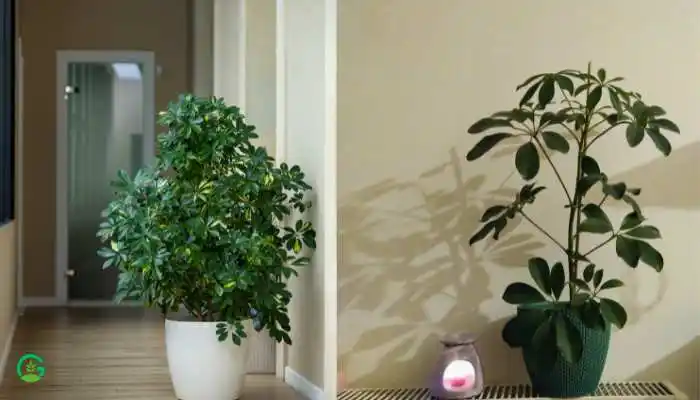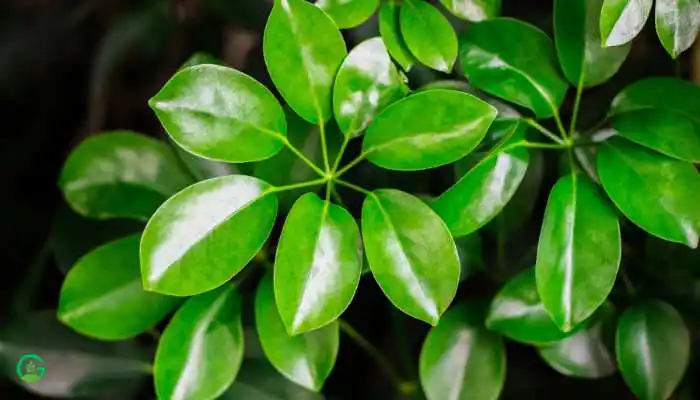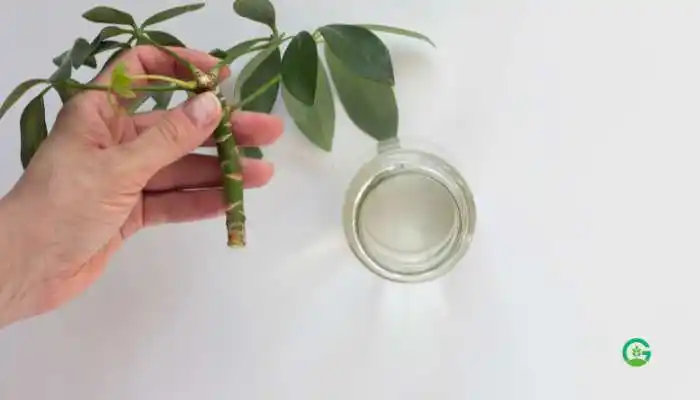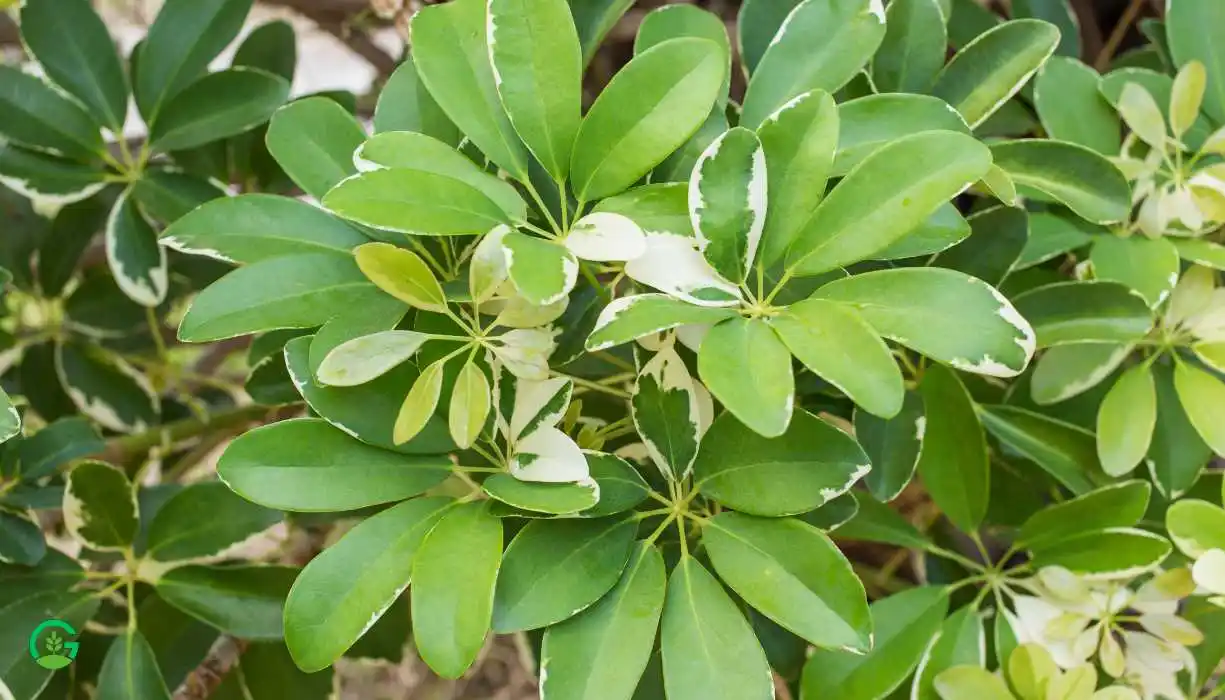Dwarf Umbrella Plants Guide
The Dwarf Umbrella Tree, also known as Schefflera arboricola, is a popular houseplant known for its attractive foliage and ease of care.
This guide will walk you through everything you need to know about this charming plant, from its origins and characteristics to detailed care instructions and common issues.
Whether you’re a seasoned plant parent or a beginner looking to add some greenery to your space, this guide will provide you with all the information you need to grow a healthy and beautiful Dwarf Umbrella Tree.
Table of Contents
Introduction to the Dwarf Umbrella Plant
The Dwarf Umbrella Tree is a versatile and attractive plant that can thrive in various indoor environments. With its glossy green leaves and umbrella-like clusters, it’s no wonder this plant has become a favorite among houseplant enthusiasts. In this guide, we’ll explore all aspects of caring for a Dwarf Umbrella Tree, ensuring you have the knowledge to keep your plant healthy and vibrant.
Origin and Characteristics
Origin
The Dwarf Umbrella Tree is native to Taiwan and Hainan, China. It belongs to the Araliaceae family, which includes other popular houseplants like the Fatsia and the English Ivy.
Characteristics
This plant typically grows to a height of 3-4 feet indoors, making it a perfect choice for tabletops, desks, and small spaces. Its leaves are palmately compound, meaning they are divided into several leaflets that spread out from a central point, much like the ribs of an umbrella.

Benefits of Having a Dwarf Umbrella Plants
Aesthetic Appeal
The Dwarf Umbrella Tree adds a touch of elegance and tropical charm to any room. Its lush foliage can brighten up even the dullest of corners.
Air Purification
Like many houseplants, the Dwarf Umbrella Tree helps improve indoor air quality by removing toxins and releasing oxygen.
Low Maintenance
This plant is relatively easy to care for, making it an ideal choice for both novice and experienced plant owners.
Choosing the Right Dwarf Umbrella Plants
When selecting a Dwarf Umbrella Tree, look for a plant with vibrant, healthy leaves. Avoid plants with yellowing or wilted foliage, as this could indicate poor health or improper care. It’s also a good idea to inspect the plant for any signs of pests or diseases before bringing it home.
Ideal Growing Conditions
Temperature
The Dwarf Umbrella Tree prefers temperatures between 60-75°F (16-24°C). Avoid placing the plant in drafty areas or near heating and cooling vents.
Humidity
This plant thrives in moderate to high humidity. If your home is particularly dry, consider using a humidifier or placing the plant on a humidity tray.

Planting and Repotting
Planting
Use a well-draining potting mix to plant your Dwarf Umbrella Tree. A mix designed for tropical plants or a combination of regular potting soil and perlite works well.
Repotting
Repot your Dwarf Umbrella Tree every 2-3 years, or when it becomes root-bound. Choose a pot that is 1-2 inches larger in diameter than the current one.
Watering Needs
Frequency
Water your Dwarf Umbrella Tree when the top inch of soil feels dry to the touch. Overwatering can lead to root rot, so be sure to let the soil dry out slightly between waterings.
Method
Water the plant thoroughly, allowing excess water to drain out of the bottom of the pot. Avoid letting the plant sit in standing water.
Light Requirements
Indirect Light
The Dwarf Umbrella Tree prefers bright, indirect light. It can tolerate lower light conditions, but its growth may slow down, and the foliage may not be as vibrant.
Avoid Direct Sunlight
Direct sunlight can scorch the leaves, so it’s best to place the plant in a location where it will receive filtered light.

Fertilization and Soil
Fertilization
Feed your Dwarf Umbrella Tree with a balanced liquid fertilizer every 4-6 weeks during the growing season (spring and summer). Reduce feeding during the fall and winter months.
Soil
A well-draining potting mix is essential for the health of your Dwarf Umbrella Tree. A mix containing peat moss, perlite, and pine bark is ideal.
Pruning and Maintenance
Pruning
Regular pruning helps maintain the shape and size of your Dwarf Umbrella Tree. Remove any dead or yellowing leaves and trim back overgrown branches to encourage bushier growth.
Cleaning
Wipe the leaves with a damp cloth to remove dust and keep them looking shiny and healthy.
Pest and Disease Management
Common Pests
The Dwarf Umbrella Tree can be susceptible to pests such as spider mites, scale, and mealybugs. Regularly inspect your plant for signs of infestation and treat with insecticidal soap if necessary.
Diseases
Root rot is a common issue caused by overwatering. Ensure your plant is in well-draining soil and avoid letting it sit in water.
Image | Product Name | Review | Price |
Propagation Methods
Stem Cuttings
One of the easiest ways to propagate a Dwarf Umbrella Tree is through stem cuttings. Cut a healthy stem with at least 3-4 leaf nodes and place it in water or moist soil until roots develop.
Air Layering
This method involves wounding a section of the stem and wrapping it with moist sphagnum moss. Once roots form, the new plant can be cut from the parent and potted separately.
Common Issues and Solutions
Yellowing Leaves
Yellow leaves can indicate overwatering or poor drainage. Adjust your watering schedule and ensure the pot has adequate drainage holes.
Drooping Leaves
Drooping leaves may be a sign of underwatering or low humidity. Increase the frequency of watering and consider boosting humidity levels.
Seasonal Care Tips
Spring and Summer
During the growing season, ensure your Dwarf Umbrella Tree gets plenty of bright, indirect light and regular feedings.
Fall and Winter
Reduce watering and feeding during the cooler months as the plant’s growth slows down. Keep it away from cold drafts and heating vents.
Read More
Conclusion
Caring for a Dwarf Umbrella Tree is a rewarding experience that can bring a touch of nature into your home. By following the guidelines in this comprehensive guide, you’ll be well-equipped to keep your plant healthy and thriving. Remember, the key to a happy Dwarf Umbrella Tree is providing the right balance of light, water, and care.
FAQs
How often should I water my Dwarf Umbrella Tree?
Water your Dwarf Umbrella Tree when the top inch of soil feels dry. This usually means watering once a week, but it can vary depending on the environment.
Can I grow a Dwarf Umbrella Tree in low light conditions?
Yes, the Dwarf Umbrella Tree can tolerate low light, but its growth may slow down, and the foliage may not be as vibrant.
What should I do if my Dwarf Umbrella Tree has yellow leaves?
Yellow leaves can be a sign of overwatering. Check the soil moisture and adjust your watering schedule accordingly.
How do I propagate my Dwarf Umbrella Tree?
You can propagate your Dwarf Umbrella Tree through stem cuttings or air layering. Both methods are effective and relatively easy to do.
Is the Dwarf Umbrella Tree toxic to pets?
Yes, the Dwarf Umbrella Tree is toxic to pets if ingested. Keep it out of reach of curious cats and dogs.




















